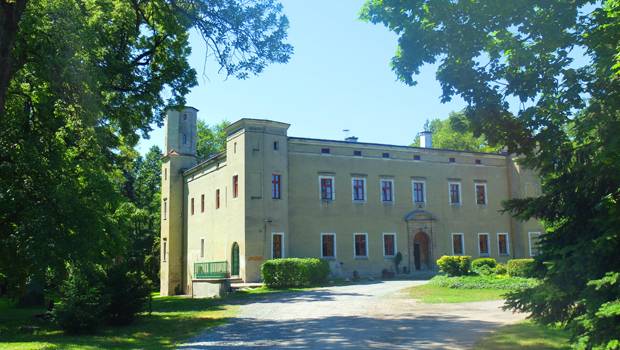The palace in Dobroszyce was built between 1589 and 1601 by Andreas von Huegel as a defensive manor house in the Renaissance style. The building was designed as a two-storey, four-winged structure, on a rectangular plan with an internal courtyard, and a rampart and moat surrounding it. In 1663, like the whole village, the palace passed into the hands of Sylvius Nimrod, who died a year later. His son, Julius Sigismund, rebuilt the palace in 1765 as a princely residence in Renaissance and Baroque form, thus moving towards the then popular palace-fortress ("palazzo in fortezza") form. In 1792, the manor became the property of the Saxon dynasty. In 1853, under Friedrich Wilhelm von Braunschweig, it underwent major reconstruction and served as the residence of the administrators of the princely domain (during this period, unfortunately, the baroque volute gables known from the 18th century drawings were removed). Until World War II, the estate was owned by the von Retter family. After 1945, the property was taken over by the Polish state. A devastating renovation took place between 1975 and 1985, destroying much of the original decoration. At present, the palace is in private hands. The interior of the manor house has preserved barrel vaults in the cellars, vaults in the ground floor with characteristic early Baroque "beaks" in the corner rooms, and wooden ceilings above. The early Baroque decorations included a Mannerist portal with a mask in the key of an arch from the end of the 17th century, profiled window frames (so-called fascias), a Baroque staircase from around 1675 and Baroque stucco decorations of the audience and theatre hall (mentioned in the description from 1706) with characteristic vases with flower bouquets in niches. The farmstead today dates mainly from the turn of the 20th century. Red brick outbuildings, stables and outbuildings have been preserved. The oldest building is outbuilding no. 2, situated to the west of the palace, with classicist forms, the date 1821 and the coat of arms of Friedrich Wilhelm Brunszwicki above the entrance and the door still retaining baroque forms. From the former park setting, the following have been preserved: a 300-year-old yew tree located at the palace's west elevation, a ginkgo biloba and a Wejutka pine. The earlier 17th century garden took on the character of a typical naturalistic park in the late 19th century, bounded from the south by an artificial watercourse.




















